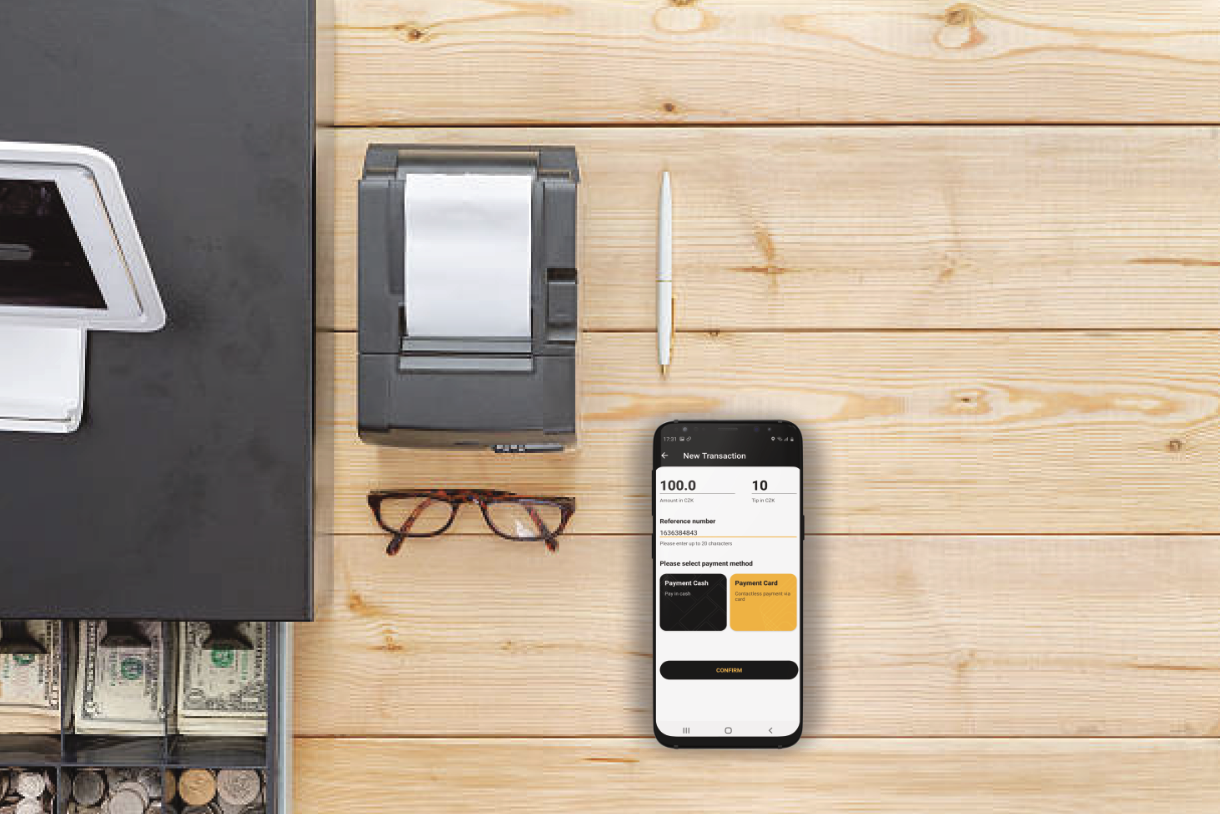Last year (officially, we have been working on the product since 2019) we launched the first mentioned terminal in a mobile phone. The physical terminal is suddenly gone, the benefit for the merchant has remained the same – accepting card payments, whether it is plastic or stored in a phone or watch. And not only that. How is this possible? I won't bore you much with the technical details, but Android has made it possible to securely access the phone's NFC chip and use it for bank card payments. A very significant part of the logic has moved from the end device to the servers, and the architecture has changed significantly. Security has been significantly strengthened because we are not the administrator of the device on which the payment takes place and we do not have it under remote management. Therefore, all security has been moved directly to the application and to the servers. At first glance, the whole application seems very simple, but believe me, there is a pile of important things going on in the background, checks, etc. Therefore, the model used for many years has fundamentally changed and brought with it very fundamental changes. The previous lengthy processes associated with physical terminals, such as storage, keying, preparation, configuration, installation and service, have suddenly disappeared. Instead of launching in a matter of days, the ability to start receiving payments has been shortened to just downloading and installing the app on my phone (now I leave aside the processes of signing the contract, etc.)
So, we come to the main topic of this article. At first glance, we can safely say that the terminal in the mobile completely destroys physical terminals. But the history of the payment world has shown us that the decision maker will be the adoption of this technology in all markets. And that sometimes takes years. In our region, the situation is different and we are the best at adopting new technologies in payments. Interesting isn't it? We often wonder why this is the case, because we are not a technological powerhouse. Thanks to this, we can write today that in our region we operate the most mobile terminals in the world and we are practically the furthest in this area. However, I can assure you that physical terminals will be around for several years to come, especially in large chains and networks. Maybe push-button terminals will replace touch terminals, but physical terminals will still be used there. Physical terminals are very robust compared to a mobile phone, counting on heavy traffic and rude handling (and perhaps even a greasy finger of the customer with sausage). There are no classic phones yet, maybe industrial Android devices are, but they are not designed for retail sale (NFC chip placement, etc.).

But that can change quickly. But according to our sales numbers, we can assure you that the mobile terminal will take over from terminals in small shops, services, delivery, freelancing and many other areas, and it's already happening. Careful, I wouldn't want you to get the impression that the terminal in mobile has only limited potential - and frankly, we also set industry boundaries at the beginning, but these soon collapsed completely. This has been confirmed by our customers themselves and today we have mobile terminal clients in more than two hundred areas and industries, from small entrepreneurs and businesses to large corporations. Terminal in Mobile can consolidate everything into a single, completely open and mobile device. The customer decides what to upload to the device, what to use, and most importantly, on what device. Yes, and he can call a card payment through the open API from his own app or apps. Thus, the terminal on the mobile virtually complements the unlimited world of Android with card payments and other methods. If you're thinking about any boundaries or limits to this solution, forget it, because they don't exist. What about terminal manufacturers? They, in my opinion, are going to have significantly harder times in the next few years and sales probably won't be what they used to be (some are feeling it in our region already). But it won't be right away, as I wrote before, we can't judge the whole world by our region, especially when for example the US has only recently switched to contactless technology. Maybe that's why some manufacturers are venturing into other areas of the payments world.
But that time will come, and the one who will benefit the most from it will be the traders themselves. It will no longer be a battle of devices, but of applications. What payment providers have invested in the device will invest in app development. Just look into the banking world. What awaits us next in this area? What about Apple's platform? About that again maybe next time.
